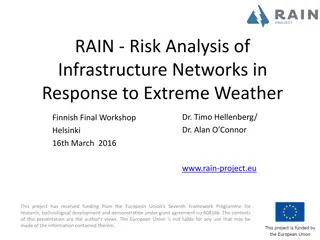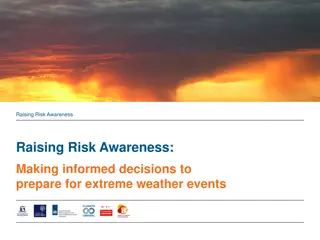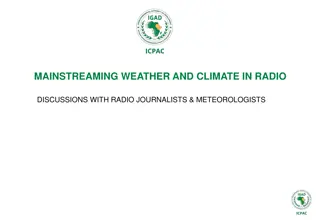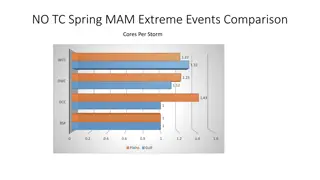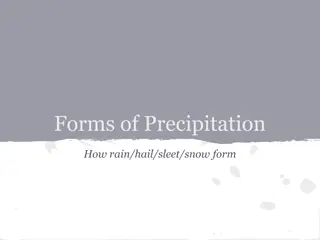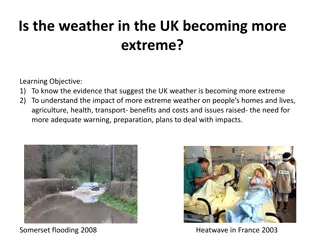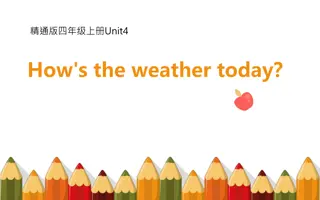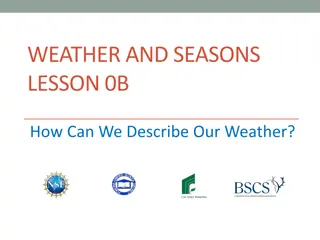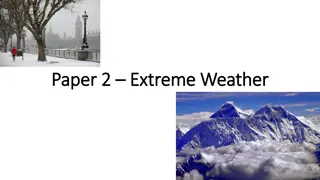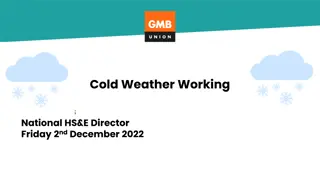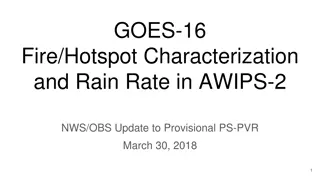RAIN Project: Risk Analysis of Infrastructure Networks in Response to Extreme Weather
The RAIN Project focuses on assessing and mitigating the impact of extreme weather events on critical infrastructure across the EU. Through a systematic risk management framework, the project aims to enhance infrastructure security and minimize vulnerabilities. With a vision to develop a more resilient European infrastructure network, the project involves various partners and emphasizes strategies for land transport vulnerability.
Download Presentation

Please find below an Image/Link to download the presentation.
The content on the website is provided AS IS for your information and personal use only. It may not be sold, licensed, or shared on other websites without obtaining consent from the author. Download presentation by click this link. If you encounter any issues during the download, it is possible that the publisher has removed the file from their server.
E N D
Presentation Transcript
RAIN Project Risk Analysis of Infrastructure Networks in response to extreme weather Maria Luskova University of Zilina, Slovakia Maria.luskova@fbi.uniza.sk www.rain-project.eu Crisis Management 9. mezin rodn v deck konference BEZPE NOST REGION 21.6. - 22.6.2016 BRNO, R This project has received funding from the European Union s Seventh Framework Programme for research, technological development and demonstration under grant agreement no 608166. The contents of this presentation are the author's views. The European Union is not liable for any use that may be made of the information contained therein.
RAIN FP7 Security Research Call FP7- SEC 2013 - 1 Activity Security of infrastructures and utilities . Topic Impact of extreme weather on critical infrastructure . the aim: to develop a systematic risk management framework that explicitly considers the impacts of extreme weather events on CI and develops a series of mitigation tools to enhance the security of the pan-European infrastructure network.
RAIN The RAIN vision is to provide an operational analysis framework that identifies critical infrastructure components impacted by extreme weather events and minimize the impact of these events on the EU infrastructure network. This framework will give support to optimizing the risk assessment process, quantifying weather related hazards and reducing system vulnerability, with a view to developing a more resilient European infrastructure network.
Project Coordinator: TRINITY COLLEGE DUBLIN, Ireland Project partners: EUROPEAN SEVERE STORMS LABORATORY, Germany UNIVERSITY OF ZILINA, SK TECHNISCHE UNIVERSITEIT DELFT, Netherlands GAVIN AND DOHERTY GEOSOLUTIONS LTD, Ireland DRAGADOS SA DRAGADOS SA, Spain FREIE UNIVERSITAET BERLIN FUB, Germany ROUGHAN & O'DONOVAN LIMITED ROD, Ireland HELLENBERG INTERNATIONAL OY HELLENBERG, Finland ISTITUTO DI SOCIOLOGIA INTERNAZIONALE DI GORIZIA, Italy PRAK PETER LEONARD PSJ, Netherlands ILMATIETEEN LAITOS ILMATIETEEN, Finland YOURIS.COM YOURIS, Belgium APLICACIONES EN INFORMATICA AVANZADA SL, Spain
WP3 Land Transport Vulnerability WP3 leader: UNIZA Faculty of Security Engineering Objectives: Identification of critical land transport infrastructure. Review of critical land transport infrastructure failures caused by extreme weather events and current means of protecting them. Development of an understanding how failure of this infrastructure leads to societal vulnerability/insecurity.
WP3 partners TCD, ESSL , Gavin and Doherty, DRAGADOS, HELLENBERG, ISIG, PSJ
Task 3.1 Identify and Review of Critical Land Transport Infrastructures failure (Case Studies) identification of critical land transport infrastructure elements (road and rail transport) based on defined sectoral and cross-cutting criteria and defining the most probable threats to road and rail critical infrastructure elements, elaboration of two specific case studies describing destruction impacts on critical land transport infrastructure in North-West Slovakia and South-East Finland.
Task 3.1 .
Task 3.1 Density Traffic peak Traffic Intensity Light traffic Night traffic Capacity Financial demandingness Construction size Time demandingness Financial demandingness Recovery demandingness Sectoral criteria Time demandingness Material value of object Alternate route costs Economic impact Financial costs Damage to natural environment costs Terrorist attack probability Object uniqueness Impact on society Terrorist attack probability Impact Impact on property Impact on natural environment Probability of occurence Impact on society Impact on property Impact on natural environment Emergency event probability Impact
Task 3.1 Case study Slovakia The scenario of the case study Impacts of river floods on road and rail critical infrastructure in North-West Slovakia is aimed at the description of the hypothetical meteorological event, description of transport infrastructure after the hypothetical event and description of management of emergency. This case study highlights that people have to be prepared also for crisis situations that sometimes seem to be unrealistic but because the frequency and intensity of extreme weather events is increasing, and they imply a serious threat to people, the danger that cause cannot be underestimated.
Task 3.1 Case study Finland The case study Summer storms 2010 and the winter storm 2011 in Finland covers two major storms hitting Finland, in 2010 the summer storms and in 2011 the winter storm. Common factor in these two storm surges was their disastrous effect on national critical infrastructures. This case study highlights the civil security mechanism and the lessons derived from these two major disasters in Finland.
Task 3.1 D 3.1 List of critical land transport infrastructure elements and the most probable threats to critical land transport describes developed methodology for identification of the critical land transport infrastructure elements and the most probable threats to critical land transport infrastructure which originate from extreme weather events. D 3.3 Scenarios and case study of river floods on road and rail critical land transport infrastructures describes the hypothetical flood on road and rail critical infrastructure in north-west part of Slovakia and case study of summer storms 2010 and the winter storm 2011 in Finland. MS 5 Defining the list of the most probable threats to critical transport infrastructure describes the real lists of relevant threats to critical road and rail land transport infrastructure caused by extreme weather events.
Task 3.2 Review of methods for protecting critical land transport infrastructure creation of database of current methods and best practices that relate to the preparedness and response to the serious incidents that involve critical land transport infrastructure and their analysis for specific problems. we came out of the norm IEC 300-3-9 Risk Management.
Task 3.2 created database of methods which might be used in the environment under the influence of extreme weather events on the critical transport infrastructure, risk identification methods, risk evaluation methods, methods of network analysis, critical transport infrastructure protection methods, selection of methods depends on the solved problems, input data, knowledge and experiences of the research team. attachment - brief descriptions of real cases of land transport infrastructures where measures against extreme weather events have been taken.
Task 3.2 D 3.2 Defining critical land transport infrastructure protection methods database includes results of the research carried out within Task 3.2 1. THE METHODS IN THE PREPARATORY PHASE OF RISK MANAGEMENT 1.1 Methods for identification of risks in critical infrastructure 1.2 Methods for evaluation of the risks 2. THE METHODS IN THE IMPLEMENTATION PHASE OF THE RISK MANAGEMENT 2.1 Methods of network analysis 2.2 Methods of protection of critical transport infrastructure 3. CASE STUDIES existing examples of mitigation actions in land-transport critical infrastructures
Task 3.2 4. CASE STUDIES Flooding gates at Copenhagen Metro ( Adaptation of transport to climate change in Europe of the European Environment Agency (2014) Kuala Lumpur s Stormwater Management and Road Tunnel (SMART)
Task 3.3 Effects on Societal Vulnerability (economics, social impact, financial, security) This task is focused on development of an understanding how failure of critical land transport infrastructure leads to societal vulnerability. Three sub-tasks: research of the societal vulnerability concepts and societal vulnerability components, development of indicators of societal vulnerability, development of methodology for measuring societal vulnerability
Task 3.3 Vulnerability as a function of three elements (core factors): exposure to extreme weather events (presence of people , livelihoods; environmental services and resources; infrastructure; or economic, social, or cultural assets in places that could be adversely affected, susceptibility: the predisposition and likelihood to suffer harm when a hazard strikes a community or a system is exposed, adaptive capacity: strengths, attributes, and resources available to an individual, community, society, or organization that can be used to prepare for and undertake actions to reduce adverse impacts, moderate harm, or exploit beneficial opportunities. Exposure Susceptibility Adaptive capacity Potential impact Vulnerability
Task 3.3 developed a multilevel approach for measuring societal vulnerability which leads to the determination of the overall Societal Vulnerability in the form of Vulnerability Index VI, Vulnerability Index is formed by three Vulnerability Core Factors (Exposure - E, Susceptibility - S, and Adaptive Capacity - AC, while Exposure and Susceptibility together create Potential Impact - PI), each of these three factors is formed by three different Societal Categories, Societal Categories are formed by several Vulnerability Indicators, identified and described 31 indicators of societal vulnerability, Vulnerability Index (VI) - the measure of societal vulnerability calculated on the basis of selected vulnerability indicators. The higher VI value the higher societal vulnerability.
Task 3.3 Vulnerability Index Vulnerability Core Factors Adaptive Capacity Exposure Potencial Impact Susceptibility Level 1 Vulnerability Societal Categories Societal Category A Societal Category B Societal Category C Societal Category D Societal Category E Societal Category F Societal Category G Societal Category H Societal Category ... Level 2 Indicator 1 Indicator 2 Indicator 4 Indicator 5 Indicators ... Vulnerability Indicators Level 3 Indicator 3 Indicators ... Indicators ... Indicators ... Indicators ... Indicators ... Indicators ... Fig. Multilevel approach to the Vulnerability Index calculation
Task 3.3 Detailed depiction for measuring Societal Vulnerability
Task 3.3 D 3.4 Methodology for measuring societal vulnerability due to failure of critical land transport infrastructure elements includes two basic parts: theoretical aspects of vulnerability, proposed methodology for measuring societal vulnerability based on multilevel approach to societal vulnerability measuring. MS6 -Indicators of societal vulnerability and approach to measure vulnerability proposed 31 indicators and approach integrates different aspects of the vulnerability
Task 3.3 certain degree of subjectivity in determining weights of indicators, societal categories, and core factors. Subjectivity can be minimized by determining these values by group of experts, to determine individual indicators, it is crucial to consider the specifications of the given affected region, i.e. the country according to the socio-economic development context as well as the cultural and institutional aspects of daily life and also, to consider the respective statistical data available, vulnerability is dependent on specific hazard, climate, regional geographical features. Hence, target region can be more vulnerable to a certain kind of threat but much more resistant, i.e. less vulnerable to another kind of threat. We incline to this idea and therefore, it is necessary to evaluate vulnerability for each threat and region separately.


